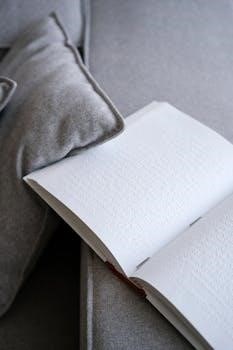DTF Transfer Size Guide⁚ Mastering Print Dimensions for Apparel
DTF transfer printing revolutionized apparel customization, offering vibrant, durable designs. Mastering print dimensions is key to achieving professional results. This guide unlocks the secrets to optimizing design size for various garments, ensuring visually appealing and high-quality transfers every time.
Direct to Film (DTF) transfer printing is a cutting-edge technique revolutionizing the custom apparel industry. It offers a versatile and efficient method for applying vibrant, durable designs to various fabrics, including cotton, polyester, and blends. Unlike traditional methods, DTF allows for intricate details and a wide color gamut, making it ideal for complex graphics. The process involves printing designs onto a special PET film using water-based inks, followed by applying a powdered adhesive. This transfer is then heat-pressed onto the garment, resulting in a high-quality, long-lasting print.

Understanding DTF Transfer Film
DTF transfer film is a specialized material crucial for direct-to-film printing. It acts as a carrier for the design, ensuring vibrant color transfer and durability. Selecting the correct film impacts print quality and ease of use during the heat press application.
Types of DTF Film⁚ Hot Peel vs. Cold Peel
DTF film comes in two main types⁚ hot peel and cold peel. Hot peel film is removed immediately after heat pressing, offering a faster production process. This is a hybrid double sided, hot peel. Cold peel film requires cooling before removal, potentially providing better detail retention, especially for fine lines. The choice depends on workflow preferences and the complexity of the design; hot peel offers speed, while cold peel may enhance quality. Experiment to determine which film best suits your needs and equipment. It offers bright colors and a premium coating.
Design Preparation for Optimal Transfer Size
Effective design preparation is critical for DTF transfers. Begin by creating or selecting a high-quality image, optimizing it for your garment. Ensure the design is sized appropriately for the item, guaranteeing a visually appealing and professional-looking final product.
CMYK Color Considerations for Vibrant Prints
For vibrant DTF transfer prints, understand CMYK color management is essential. DTF relies on CMYK files for accurate color representation. When preparing your design file, ensure it is in the correct CMYK format. Use specialized inks carefully produced in cyan, magenta, yellow, and black. White serves as the base layer, so the machine prints the design on it. Optimizing your design for visual impact by experimenting with colors and contrast to create attention-grabbing designs. This ensures color accuracy and vibrancy on textiles.
Image Resolution and Detail Preservation
To preserve intricate details in DTF transfers, high image resolution is crucial. Start with a high-quality image; the higher the resolution, the sharper your final print will be. A low-resolution image will result in a blurry or pixelated transfer. Ensure your artwork is sized appropriately for the item you’re transferring onto, using graphic design software. Never hesitate to try different styles and techniques. Optimizing your printer settings is necessary for sharp and clear results.

Heat Press Settings Guide
Achieving optimal DTF transfers requires precise heat press settings. Temperature, pressure, and time are crucial factors. This guide provides recommendations for various fabrics, ensuring successful and durable prints. Always refer to the manufacturer’s guidelines for specific instructions.
Temperature and Pressure Recommendations
For most DTF transfers, a temperature range of 275-330°F (135-165°C) is generally recommended. However, always consult the transfer manufacturer’s instructions for specific recommendations. Pressure should be medium to firm, ensuring proper adhesion without damaging the fabric or transfer. Lighter fabrics may require lower temperatures and pressure settings. Adjustments may be needed based on the fabric type and the specific DTF film being used. Experimentation and careful observation are essential to dial in the perfect settings for consistent, high-quality results. Always pre-press to remove moisture!
Time Settings for Different Fabrics
DTF transfer time varies based on fabric. Cotton often requires 10-15 seconds. Polyester typically needs less time, around 10-12 seconds, to prevent scorching. Delicate fabrics may require even shorter times, perhaps 8-10 seconds. Thicker materials might need slightly longer. Always refer to the transfer manufacturer’s instructions. Experiment with small test pieces to determine optimal timing. Over-pressing can lead to discoloration or damage. Under-pressing results in poor adhesion. Adjustments are vital for achieving a durable, vibrant transfer. Proper time settings are the key! Remember pre-pressing is important too.

Step-by-Step Transfer Process
DTF transfers demand precision. Begin by pre-pressing the garment. Position the transfer accurately. Apply heat and pressure. Allow cooling before peeling. A consistent process ensures vibrant, durable results, transforming ordinary apparel into custom masterpieces.
Pre-Pressing Garments for Best Results
Pre-pressing is a crucial step in the DTF transfer process. Before applying your design, pre-press the garment for a few seconds. This action removes any moisture or wrinkles, ensuring optimal adhesion of the transfer film. A smooth, even surface is essential for vibrant and long-lasting prints. Failing to pre-press can lead to uneven transfers, peeling, and reduced durability. Always pre-press your garments to achieve professional-quality results. Proper preparation sets the stage for a successful and visually appealing final product, maximizing the impact of your custom apparel designs.
Positioning the Transfer Accurately
Accurate placement is paramount when applying DTF transfers. Carefully position the transfer onto the garment, ensuring it is centered and aligned correctly. Use guidelines or measuring tools to achieve precise placement. A well-positioned transfer enhances the overall aesthetic appeal of the finished product. Misalignment can result in a skewed or unprofessional look. Take your time to double-check the placement before applying heat. This attention to detail will elevate the quality of your custom apparel and ensure customer satisfaction. Consistent and accurate positioning is a hallmark of professional DTF transfer application.
Troubleshooting Common Transfer Issues
DTF transfer application can present challenges. Addressing issues like peeling, cracking, color bleeding, and fading is crucial. Understanding the causes and solutions ensures high-quality, durable prints. Proper troubleshooting saves time, materials, and ultimately, enhances customer satisfaction with your finished products.
Addressing Peeling and Cracking
Peeling and cracking in DTF transfers are common issues often stemming from improper application. Insufficient heat or pressure during the heat press process can hinder proper adhesion, leading to peeling. Cracking, on the other hand, may indicate over-curing or using excessive pressure. Ensuring the correct temperature, pressure, and time settings as recommended by the manufacturer is crucial.
Pre-pressing garments to remove moisture and wrinkles also aids adhesion. Additionally, using high-quality DTF film and inks designed for your specific fabric type minimizes these problems, resulting in durable and long-lasting prints.
Fixing Color Bleeding and Fading
Color bleeding and fading in DTF transfers detract from their visual appeal and longevity. Color bleeding often occurs when inks spread beyond their intended boundaries, typically due to excessive heat or pressure. To prevent this, carefully calibrate your heat press settings and ensure proper alignment of the transfer.
Fading, on the other hand, may indicate poor ink quality or inadequate curing. Opting for high-quality DTF inks with excellent color retention is essential. Proper curing, following the manufacturer’s guidelines, ensures the ink bonds effectively with the fabric, preserving vibrant colors over time.
Tips and Tricks for Softer DTF Transfers
Achieving a soft hand feel with DTF transfers enhances garment comfort and appeal. Techniques like reducing underbase thickness and utilizing negative space in designs minimize ink deposit, resulting in a lighter, more flexible transfer that feels better against the skin.
Reducing Underbase Thickness
The white underbase in DTF transfers provides vibrancy on dark garments, but excessive thickness can create a stiff feel. Reducing the white ink layer minimizes the “plastic-like” sensation. Experiment with lower ink volumes in your printing software. Consider using halftone patterns for the underbase to reduce ink density while maintaining opacity. This allows some of the fabric texture to show through, enhancing softness. Careful calibration is essential to strike a balance between vibrancy and a comfortable hand feel. Remember to test different settings to find the optimal underbase thickness for your specific designs and fabrics.
Utilizing Negative Space in Designs
Strategic use of negative space, or the absence of ink, is crucial for softer, more comfortable DTF transfers. Incorporating negative space into designs minimizes the area covered by the transfer, reducing the overall stiffness. This technique allows the fabric to breathe, enhancing breathability and flexibility. By cleverly integrating negative space, you can achieve a lightweight feel without sacrificing visual impact. Experiment with removing the background and/or omitting the shirt color. This approach is particularly effective for large designs, creating a more pleasant wearing experience. Remember to balance aesthetics with functionality for optimal results.
Design Optimizations for Visual Impact
Great design goes beyond technical perfection; it demands visual appeal. Optimize designs by experimenting with colors and contrast. Consider spacing to captivate attention. Practice different styles and techniques to bring your designs to a new level.
Experimenting with Colors and Contrast
Vibrant colors and sharp details are crucial for DTF transfers. Understanding CMYK files and color management ensures accurate representations. Optimizing designs with visual appeal involves experimenting with colors and contrast. High-quality printing equipment and supplies are essential for vibrant colors and durability. Consider halftones and black knockouts for unique effects. Adjust ink levels for optimal results. Explore diverse color palettes to enhance visual impact, ensuring your designs grab attention.
Spacing Considerations for Appealing Designs
Great design isn’t just technical perfection; it’s visual appeal. Spacing plays a pivotal role in DTF transfer designs. Experiment with spacing to create designs that grab attention. Visual appeal is key, so ensure that spacing is optimized. Practice makes perfect, so try different styles and techniques. Consider negative space in designs for softer transfers. Spacing is a great way to make your designs pop; it’s about being visually appealing.
Proper Storage of DTF Transfers
Proper storage is essential for maintaining the quality and longevity of your DTF transfers. Factors like humidity, temperature, and light exposure can significantly impact transfer performance; Storing transfers in a cool, dry environment, away from direct sunlight, is crucial to prevent ink degradation and film warping. Consider using airtight containers or resealable bags to protect them from moisture. Ensure the storage area is free from dust and contaminants to avoid transfer imperfections. This careful approach will ensure your transfers remain vibrant and ready for application.

Materials Compatibility
DTF transfers offer versatility, adhering to various materials like cotton, polyester, blends, and even treated leather and nylon. Understanding material compatibility is crucial for optimal transfer adhesion and durability. Factors like fabric weave, texture, and color can influence the final print. Testing transfers on different materials before production runs is recommended to ensure desired results. Consider material-specific heat press settings and adjust as needed. Proper material selection will maximize the vibrancy and longevity of your DTF transfers, offering a wider range of customization options.
